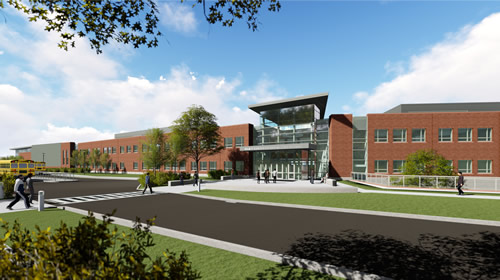Construction Begins on Connecticut High School
Construction is underway for the new Ella T. Grasso Technical High School in Groton, Conn. The 226,000-square-foot facility, designed by Moser Pilon Nelson Architects, is being built on a parcel contiguous to the existing technical high school. When the school opens for the 2019-20 school year, the existing facility will be demolished to make room for future athletic fields and facilities.
“We are very excited to have construction underway after more than a decade of planning efforts,” says Richard B. Brown, AIA, principal-in-charge of the project. “The new building will enable the student enrollment to grow to over 800 students and to do so in a facility with instruction in a dozen skilled trades.”
The $98-million project is scheduled to be completed in June of 2019. Moser Pilon Nelson is based in Wethersfield, Connecticut.
